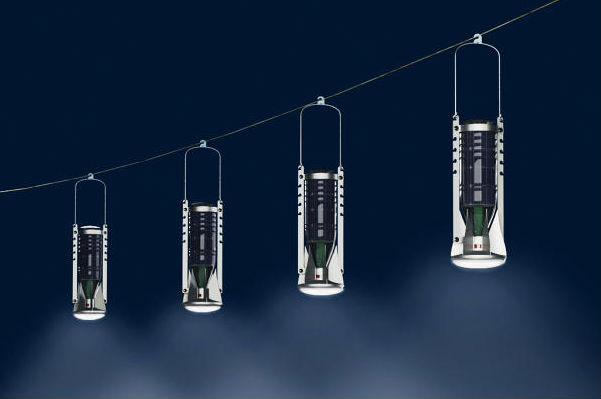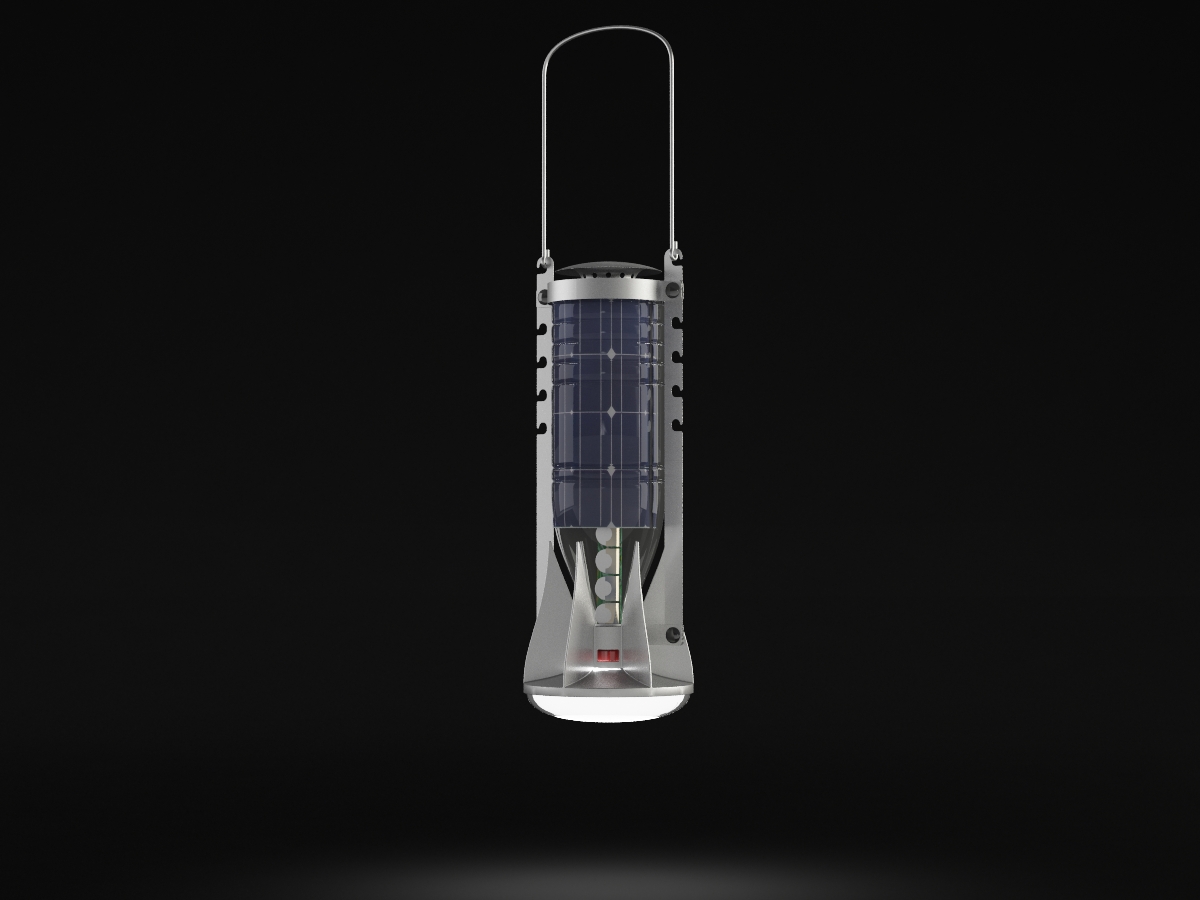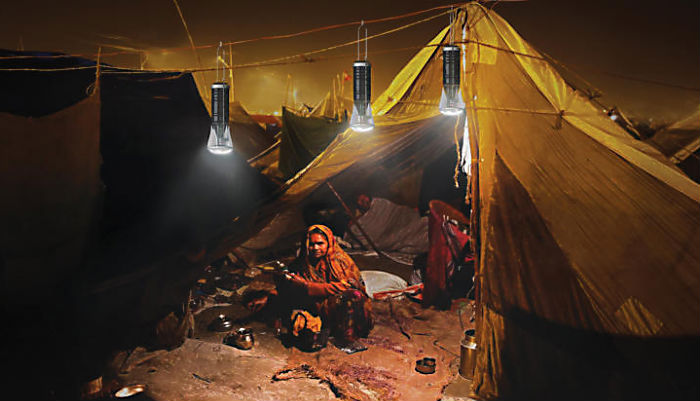Designers are working on a low-cost, sustainable light source that gives a second life to plastic water and soft drink bottles.
In big cities we take for granted how easy it is to use electrical light, but over a billion people living in developing countries and rural areas don’t have access to the power grid. In rural India, if someone wants to study at night or walk home in the dark, they’ll often have to light a kerosene lamp, which is expensive to maintain and smoky, plus it’s a pretty dangerous fire hazard if it’s accidentally tipped over.

So designers at Designnobis, a firm based in Turkey, have come up with ‘Infinite Light’, a lantern made up of a flexible solar panel, some batteries, and an empty plastic bottle.
The solar panel sits inside the bottle and collects sunlight during the day, and at night, the lantern switches over to battery power when the solar energy has been enhausted. A simple frame holds everything together, and includes a handle at the top that allows the lantern to be held and carried around, or strung up from a ceiling or an outdoor post.
“With Infinite Light, we aimed to create a sustainable lamp with minimum cost,” the team told Adele Peters at FastCompany. “The lighting unit does not require any infrastructure, and it is a ready-to-use package that can be placed in a discarded plastic bottle.”
Because plastic bottles are accessible to most communities around the world, even the very remote ones, people interested in setting up these solar lanterns will just need the internal parts to be shipped to them. This helps keep the initial costs down, and also means that rubbish that was destined to become landfill can now enjoy a continued existence as a useful, everyday appliance. “We wanted to emphasise the importance of waste materials as a growing resource,”said the designers.

The design won the 2013 Green Dot Award, which is an initiative that encourages businesses to produce environmentally friendly products, and the team at Designnobis is now working on getting their solar lanterns on the market.
Check this video to build your own Solar Light :
Source :Science Alert & A Liter For Light









